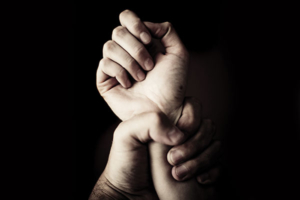Each person who has been affected by domestic violence or sexual assault will go through various steps of healing. We would like to talk about those steps and provide information on the seven steps of healing from domestic violence and sexual assault.
- Safety First
- Safety just means that the victim has the means to get away from the abuser and being able to function without fear of being harmed again.
- This is not a step that a victim is going to see as being over right away, this is a step that can take months or for some even years, but with reassurance from advocates, friends, family, victims can feel more at ease over time and realize that safety does happen it may just take time.
- Stabilize Environment

- Rushing into counseling upon leaving a domestic violence sexual assault relationship may not be the right fit for some individuals.
- Taking time to acclimate to a new environment prior to starting counseling is better for some victims as their abuse may take longer to recover from and allows therapy to fully help the victim concentrate on the healing process.
- Support Unconditionally
- Support from a therapist, support groups, friends, family members are key in helping victims talk through their emotions when leaving their abuser.
- Often times victims feel that they were wrong to leave their abuser, but it is the love and support from family and friends that helps victims understand there are options for help, support and understanding.
- Share Experiences
- Finding a support group that works with victims is one of the best ways to share your experience. What a victim receives out of the group is the unconditional support of peers, as well as guidance of how to understand their feelings.
- Sharing experiences provides a victim the support of knowing that they are not alone through their healing process.
- Support groups also help victims to understand that domestic violence and sexual assault does not single out victims, but brings them together for support.
- Settle Incidents
- Victims often do not realize the extent of the abuse they have endured.
- Often times the abuse becomes more evident that in addition to the abuse that was first seen, underlying abuse comes visible. Abuse such as mental, financial, verbal, emotional, spiritual, and sexual abuse becomes evident and adjusting to the extent of those forms of abuse means more processing of feelings for the victim.
- Stitch Wounds
- Victims often initially hold themselves responsible for the abuse they have endured, however when learning that the abuse is not their fault, it allows the victim to hold the abuser responsible for their actions.
- Set Standards
- Setting boundaries for acceptable behavior does not only apply to the abuser, boundaries allow the victim to regain control of their life.
- Boundaries show those around them that if a boundary is violated, the victim is going to confront the individual violating the boundary rather than sit back and allow the hurt to continue.
Remember abuse does not affect just women and not only partner relationships. Abuse can be present in partner relationships, parent/child relationships, friendships. Men can also be affected. It is not the nature of the relationship or sensitivity of the victim(s) that determines abuse, but the actions of the abuser.
